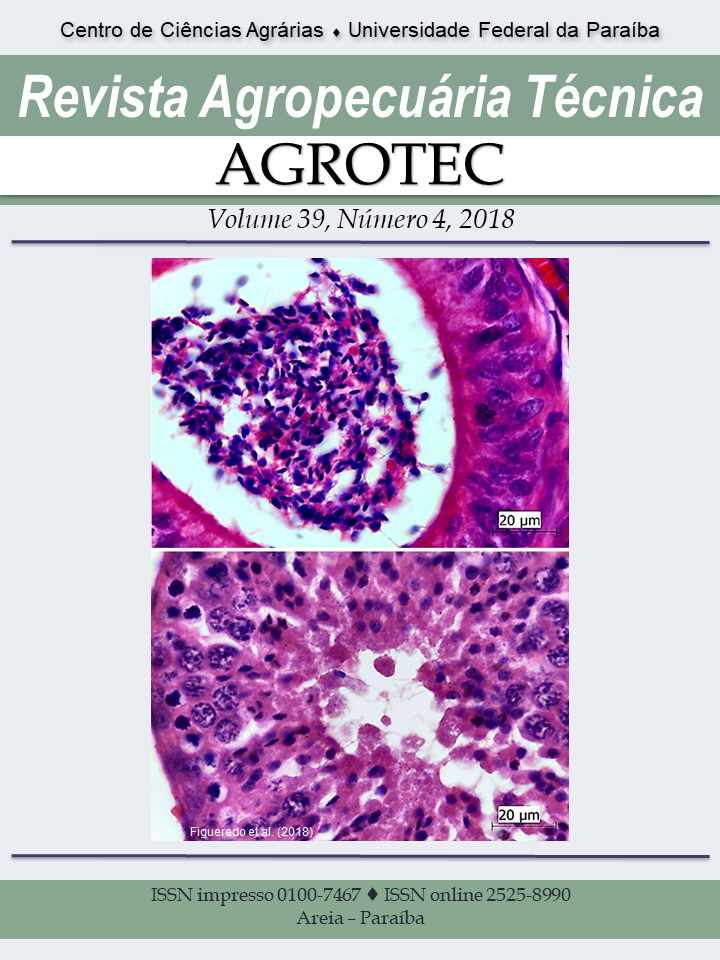Resistance of texel and ¾ texel ¼ dorper lambs at natural infections by gastrointestinal nematodes
DOI:
https://doi.org/10.25066/agrotec.v39i4.36490Keywords:
Cross, Weight gain, Nutrition, Resistance, WormsAbstract
The aim of the experiment was to evaluate the resistance of lambs Texel and ¾ Texel ¼ Dorper naturally infected by gastrointestinal nematodes, from 90 days old. It were utilized 17 lambs Texel and 18 ¾ Texel ¼ Dorper, in which the following parameters wereevaluated: egg counts per gram of feces (EPG), packed cell volume (PCV), total plasma protein (PPT) and body weight (BW). Texel lambs showed EPG count greater than ¾ Texel ¼ Dorper at 90 days of age (P <0.05). At 132 days of age the opposite occurred; Texel lambs showed lower EPG count than ¾ Texel ¼ Dorper (P = 0.072). The lambs of ¾Texel ¼ Dorper breed showed greater PCV (35%) than Texel lambs (33%) at 90 days of age (P = 0.089). In relation to PPT differences were found at 97 (P = 0.06) and 104 (P <0.05) days of age, lambs values ¾ ¼ Texel Dorper were higher than those of Texel. In relation to PPT differences were found at 97 (P = 0.06) and 104 (P <0.05) days of age, being the values of¾ Texel¼ Dorper higher than those Texel. There was no significant difference between the groups in relation to BW (P> 0.05). Texel and ¾Texel ¼ Dorper lambs should receive greater attention as the worms and nutrition, since both had influence at the performance of the animals. The average weight of the ¾ Texel/Dorper andpurebred Texel lambs was 27.8 kg and 26.15 kg, respectively, at the beginning of the experiment, and 32 kg and 30.85 kg, respectively, at the end. Texel and ¾Texel ¼ Dorper lambs should receive greater attention as the worms and nutrition, since both haveinfluence at the performance of the animals.


